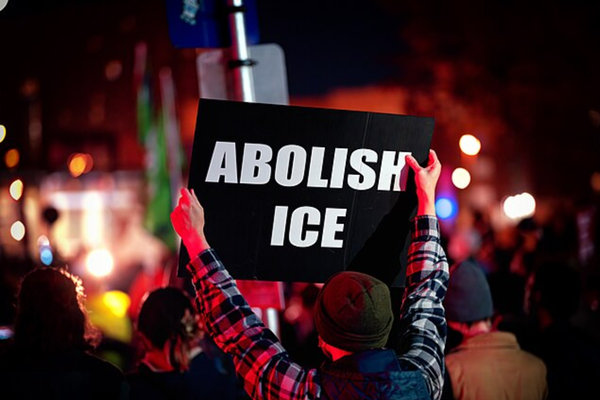
Britain’s offer to send more than a dozen Challenger 2 tanks to Ukraine has increased pressure on Germany to do likewise with its coveted Leopard 2 battle tanks. But the German defence minister’s resignation on Monday, just days before a critical meeting at the US Air Base in Ramstein, Germany, has raised questions over whether Berlin will give the green light for battle tank exports to Ukraine.
Tanks have rolled onto centre stage this week as members of the Ukraine Defence Contact Group are set to meet at the Ramstein Air Base in Germany on Friday, January 20, for a third such gathering since Russia invaded Ukraine in February last year.
The meeting could not have come at a more critical time. With weeks to go before the winter snows melt, and with Russia mobilised for a spring offensive, Ukraine requires a massive firepower boost from its Western allies – and it needs it fast.
Enter the tank, a piece of military hardware once considered obsolete and too expensive for modern warfare. But as Ukrainian troops attempt to break through Russia’s deep, fixed frontline defences in the Donbas, tanks have been dominating the discourse in the lead-up to the Ramstein meeting.
Britain upped the stakes over the weekend, when Prime Minister Rishi Sunak on Saturday said the UK would deliver a squadron of 14 Challenger 2 tanks to Ukraine. “Sending Challenger 2 tanks to Ukraine is the start of a gear change,” Sunak's office said in a statement late Saturday.
It marked the first Western donation of main battle tanks, or MBTs, to Ukraine. It was also another challenge to Germany as Europe’s most populous nation comes under increasing pressure to supply Kyiv with its Leopard 2 tanks, or least give the green light for other European nations to re-export their German battle tanks to Ukraine.
Germany has held back on supplying Ukraine with its offensive Leopard 2 tanks with Chancellor Olaf Scholz repeatedly voicing concerns over his country being perceived as escalating the conflict and provoking Russian President Vladimir Putin.
Berlin’s hesitancy has come under severe criticism from Poland and the Baltic nations as the devastating Ukraine war grinds towards its first anniversary next month.
On Monday, Polish Prime Minister Mateusz Morawiecki once again called on Germany to send Ukraine all the weapons it needs, including battle tanks.
"I call for decisive actions by the German government, for all sorts of weapons to be delivered," said Morawiecki in a keynote speech at a special ceremony in the German parliament. “The battle for freedom and our future is raging as we speak ... Tanks must not be left in storehouses, but placed in their hands,” he added.
But even as the Polish prime minister was speaking, German media was focused on news that broke barely an hour earlier, when Christine Lambrech announced her resignation as Germany’s defence minister.
A member of Scholz’s Social Democratic Party (SPD), Lambrech faced criticisms for months over what many see as Germany’s wavering response to the conflict in Ukraine.
Is it a tank or not?
Lambrech’s resignation came barely two weeks after she announced the January 20 Ramstein meeting following a phone conference with US Defence Secretary Lloyd Austin. It also came at a sensitive moment, amid hopes that the gathering of defence ministers from the Ukraine Defence Contact Group in Ramstein could help overcome Western hesitance to send advanced weapons to Ukraine.
“It could weaken the Western response to the war at a time when the West should be presenting a united front. Russia has been trying for a while to undermine Western cohesion, and with this resignation, the West looks a lot less united,” said Rod Thornton from the Defence Studies Department at Kings College London.
Over the past few weeks, momentum was building among NATO member states towards providing Ukraine with the sort of offensive weapons they had earlier refused to send for fear of provoking Moscow.
In early January, France became the first in the world to heed Kyiv’s repeated calls for Western-made armoured tanks by supplying its lightweight armoured combat vehicle, the AMX-10 RC.
>> Read more: Did France surprise Germany by pledging tanks for Ukraine?
Originally designed for reconnaissance, the AMX-10 RC is sometimes called a “light tank”, but it has wheels rather than tracks and is not considered an MBT. The wheels enable the AMX-10 RC to move faster on roads, but it is not built for mucky or rough terrain.
The US and Germany soon followed suit, with Washington announcing the supply of about 50 Bradley Fighting Vehicles and Berlin offering 40 Marder infantry fighting vehicles.
The announcement sparked a debate among defence analysts over whether the Bradleys and Marders are tanks since they both have tracks rather than wheels. Most military experts, however, agree that the Bradley and Marder do not meet the “tank” definition since they have smaller guns, shorter firing ranges, and they’re not designed to engage other tanks.
‘What is happening to the Leopard 2s?’
While Britain’s Challenger 2 makes the MBT grade, military experts note that the weekend’s announcement of a squadron of 14 vehicle deliveries is unlikely to significantly shift the dynamic on the Ukrainian battlefield.
“The Ukrainian military needs a more sustainable tank fleet. Supplying an artisanal quantity of the Challenger 2 is symbolic, but it’s not a sustainable option,” explained Shashank Joshi, defence editor at the Economist and visiting fellow at Kings College London. “The main question is, what is happening to the Leopard 2s all over Europe?”
The Leopard 2 tank, first introduced in 1979 and upgraded multiple times since, is used by 13 European armies: Austria, Denmark, Finland, Germany, Greece, Hungary, Norway, Poland, Portugal, Spain, Sweden, Switzerland and Turkey.
Together, those 13 armies have more than 2,000 Leopard 2 vehicles “across different variants and levels of readiness”, according to the European Council on Foreign Relations (ECFR). “The more that countries donate tanks, the easier it will be to share the burden of giving them away,” said the ECFR in a September 2022 report.
Tank logistics and economies of scale
Supplying Ukraine battle tanks in bulk also overcomes the logistical and training challenges that MBTs pose, according to military experts.
The Leopard 2 weighs around 69 tonnes and the Challenger 2 is nearly 72 tonnes, making them at least 20 tonnes heavier than the Soviet-designed MBTs currently used by Ukraine.
While the Ukrainian forces have the knowhow to operate Soviet-designed tanks, training them to use NATO-supplied tanks would take at least two months, Thornton estimates.
In addition, the heavy tanks require combat engineering and mobility support vehicles to operate on the battlefield.
But Thornton said the UK decision to provide just 14 heavy armoured vehicles may be more a gesture than an actual game-changer.
“The British offer of mobile battle tanks is symbolic given the numbers. Germany can supply hundreds of mobile battle tanks. If that happens, then the logistics chain, the repair equipment, all the ammunition, the support vehicles, all the kind of bits and bobs that support the main battle tanks, makes sense,” explained Thornton.
“Britain made a grandstanding offer that didn’t mean anything on the battlefield,” added Thornton. “But Germany is the holdup.”
Helmets, but not battle tanks
When the war began on February 24, Germany – with its dependence on cheap Russian energy and its postwar commitment to pacifism – was considered the weak link in the Western response to Russian aggression.
Chancellor Angela Merkel’s successor, Scholz, promised a watershed turning point by standing up to Putin, increasing defence spending and lifting postwar German military taboos.
Almost a year later though, critics says Scholz has either not delivered on his promises or he’s done too little, too late.
While she was defence minister, Lambrech absorbed some of the hardest blows, particularly with her gaffes on delivering 5,000 helmets to Ukraine when the country was in dire need of weapons to block Russian tanks advancing on the capital.
Lambrech’s exit provides Scholz an opportunity to appoint a successor who can, at the very least, be viewed as being up to the task. But the new German defence minister will quickly be thrown into the deep end of the job. US Defence Secretary Austin arrives in Berlin this week and will be holding talks ahead of Friday’s meeting at the Ramstein Air Base. On Sunday, the German and French governments will hold bilateral security talks.
With just days to go before the Ramstein meeting, and with the German defence ministry plunged into a leadership transition, expectations for substantial MBT commitments remain low. “I’m not certain we will get a firm decision on the German Leopard 2. This is subject to coalition politics inside Germany,” said Joshi.
Thornton concedes that the symbolic British Challenger 2 offer has put pressure on Germany to increase their help to Ukraine, but it may not arrive in the form of the much-desired battle tanks. “There will be some sort of increase in help,” he said. “But the degree of help is difficult to judge.”







